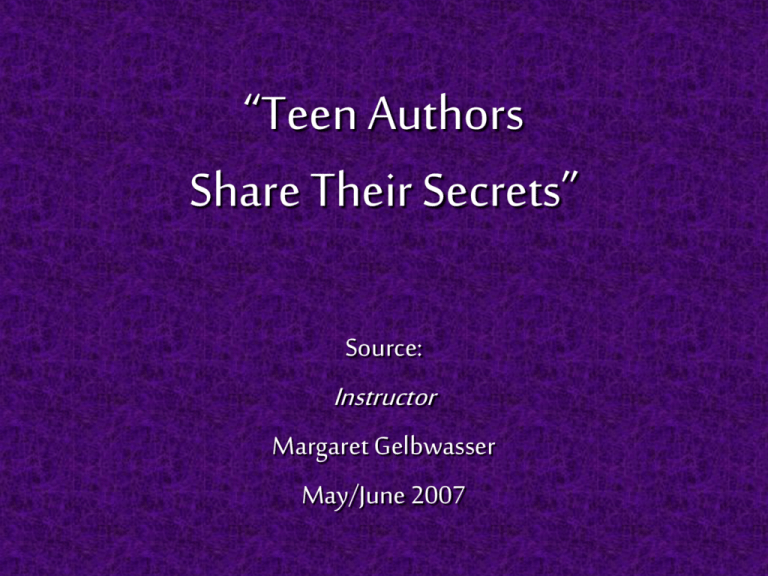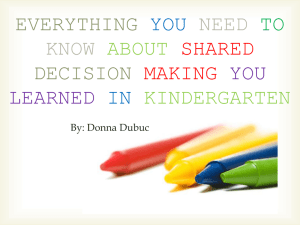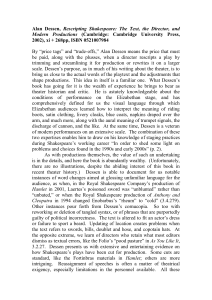Teen Authors Share Their Secrets
advertisement

“Teen Authors Share Their Secrets” Source: Instructor Margaret Gelbwasser May/June 2007 Creating Characters • What the Pros Say: “Novels for me always start with characters and the voice,” says Rachel Cohn, author of Cupcake and Gingerbread. “The challenge is staying true to that voice and not imposing your own judgments.” Creating Characters • Their Best Advice: “I have a big cabinet in my basement for projects,” says Kristen Kemp, author of this summer’s Breakfast at Bloomingdale’s. “I make folders for the characters and put note cards with their traits in each folder. Then I go through magazines and find outfits they would wear and parties they would go to.” Plotting a Page-Turner • What the Pros Say: “Sometimes it’s challenging to see where it’s all going,” says David Levithan, coauthor, with Cohn, of the forthcoming Naomi and Ely’s No Kiss List. “You know the character’s life has to unfold in a certain way. It’s up to the writer to discover what that is.” Plotting a Page-Turner • Their Best Advice: Says Kemp, “The plot has a few basic elements: a main character who wants to accomplish something very important to her and a lot of obstacles standing in the way of the character reaching her goal. The easiest way to do this is to create an antagonist character.” Organizing a Masterpiece • What the Pros Say: “I believe a story has to start in its own way,” says Levithan, “but there’s a point when you have to stop and figure out how exactly you’re going to tell the story. And that’s where organization comes in.” Organizing a Masterpiece • Their Best Advice: “People get intimidated by outlines, but this is what works for me,” says Cohn. “After writing a few chapters, I write a very short outline of one to three pages. It could be very simple, like how your character will change from point A to point Z, figuring out problems along the way, and little sentences organized chronologically.” Finding the Best Backdrop • What the Pros Say: “Setting is where the story begins. It’s the scenery of your story. And it gives you your sense of place, especially in the beginning,” says Sarah Dessen, author of Just Listen. Finding the Best Backdrop • Their Best Advice: “Writing about what’s familiar is not a cop-out,” says Cohn. “Know your basic universe first, and then let your characters talk to you within that. When I get stuck, it helps me to have pictures of the scenery.” Staying True to Dialogue • What the Pros Say: Dessen says, “Dialogue is a great way to characterize people. If you can write dialogue that moves a story forward and sounds realistic, that’s great.” Staying True to Dialogue • Their Best Advice: “One trick is to sit in a coffee place and write down what people say,” says Kemp. “Everyone speaks differently, and characters speak differently too. Another trick is to watch your favorite TV show and pay attention to how they handle dialogue.” The Bottom Line “Have faith and the story will follow,” says Dessen. www.beachhunter.net








